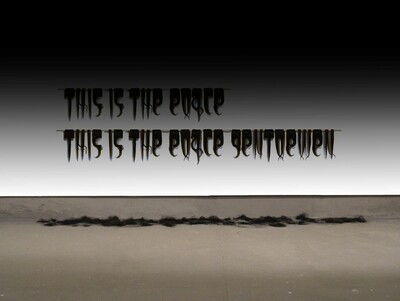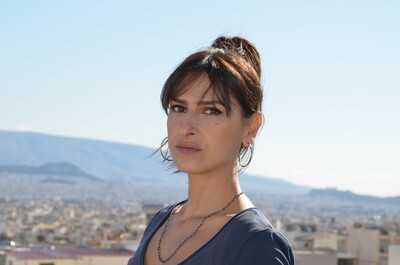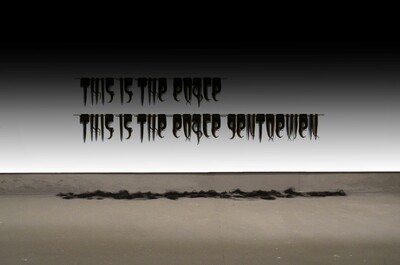

Maria Tsagkari
Tsagkari’s work deals with the complex links between innate, deeper desires and social, political and historical constructs; the ways in which emotions, expectations and impulses interact with history, texts, narratives, materiality and time.
Maria Tsagkari (born in Athens/GR) studied Conservation of Antiquities and Works of Art and worked as an art restorer before earning her undergraduate (2010) and postgraduate degrees in Visual Arts (2012) from the Athens School of Fine Arts. From 2007 to 2008 she attended the Facultad de Βellas Αrtes in Madrid on a state scholarship. Tsagkari’s work deals with the complex links between innate, deeper desires and social, political and historical constructs; the ways in which emotions, expectations and impulses interact with history, texts, narratives, materiality and time. Through references to cinema, literature and history, herworks reveal simple gestures and hidden narratives that act subversively in relation to the greater historical narrative and pose questions around the politics of desire. Since 2015, she has been an adjunct professor at the Athens School of Fine Arts.
Her works have been exhibited internationally, receiving awards such as the 2019 ARTWorks Artist Fellowship and the 2014 HYam Award for the Young Mediterranean Artistic Scene (Paris). Her works have also been exhibited at SESC Belenzinho, Brazil; Château de Penthes, Switzerland; 1st Triennial of Contemporary Art, Armenia; Triennial of Contemporary Architecture, Belgium; 4th Thessaloniki Biennale of Contemporary Art, Greece; and National Museum of Contemporary Art, Greece, among other venues. Tsagkari lives and works in Athens/GR.
The following artwork will be shown as part of the EVROVIZION.CROSSING STORIES AND SPACES project:
This Is the Place Gentlemen!, human hair, wooden pole, 500 cm x 230 cm, Athens/GR, 2023.
©Maria Tsagkari
Maria Tsagkari’s installation This Is the Place Gentlemen! reflects on the history of the Greek and European identities, their present meaning, and migration as an intrinsic part thereof. The work is made out of human hair, which carries its own history. The ceremonial act of cutting hair has been present since ancient times. It is seen as marking a transition, often being treated as the shedding of a previous identity and the emergence of a new subject. Numerous studies have shown that the cutting of hair can be seen as an offering, or a sign of mourning. It is an act that is often performed with the intention of changing one’s identity, or done to degrade, to eradicate sexuality, to marginalise, or to punish. Hair, a human material, formerly a part of one's body, has itself become a commodity that is traded, trafficked, bought and sold. The trade in human hair frequently originates in India, China, the Philippines, Brazil, or Myanmar, and the hair usually comes from women. Through the presentation of the material and the remnants of the haircut, Tsagkari’s work brings to the fore issues of social and gender inequality, justice, and the rise of xenophobia connected to migration. A gradient transitioning from dark to light forms the background to the work, referring to the origin of the word ‘Europe’ – from the Semitic word ‘ereb’, which means evening or night.
The phrase “This is the place gentlemen!” is borrowed from Giorgos Seferis’ poem ‘Stratis Thalassinos on the Dead Sea’, which was written at a time when Seferis was in forced exile in the Middle East. A sense of uprootedness, exile and nostalgia are very present in the poem. The periodic repetition of the phrase “This is the place gentlemen!”, which is written in English, in contrast to the Greek in the poem, intensifies the sense of displacement and highlights the narrator’s ironic detachment from the unfamiliar landscape that surrounds him. It remains unclear where the phrase refers to: is it Greece, is it his current location, or is it Europe? In Tsagkari’s work, the repetition of the poem’s words creates its own irony and points to the ambiguity of both the Greek and European identities, as well as the problematics that accompany the narratives around them. Greece as a geographical boundary between East and West remains a gateway, a place that can metaphorically resemble a ritual passage, a transition, from one state to another. The word ‘Gentlemen’ at the end of the phrase conveys a sense of irony and points to the absence of women from most official historical narratives of Europe.
The artwork has been commissioned by ifa (Institut für Auslandsbeziehungen) and is part of the ifa art collection.



